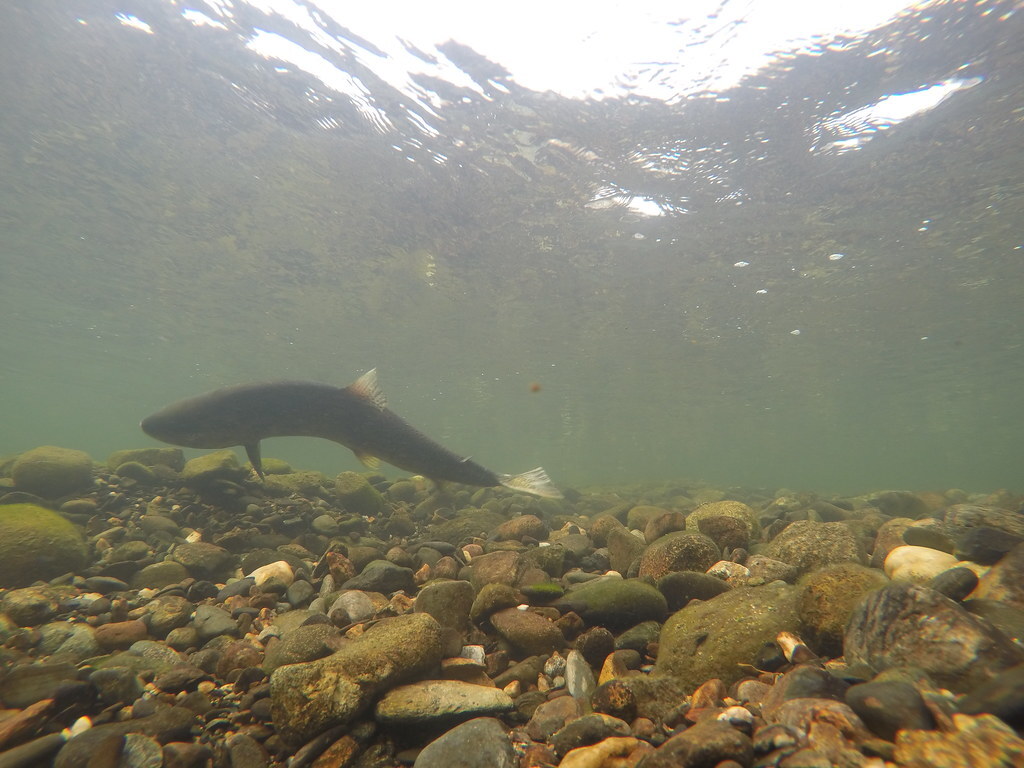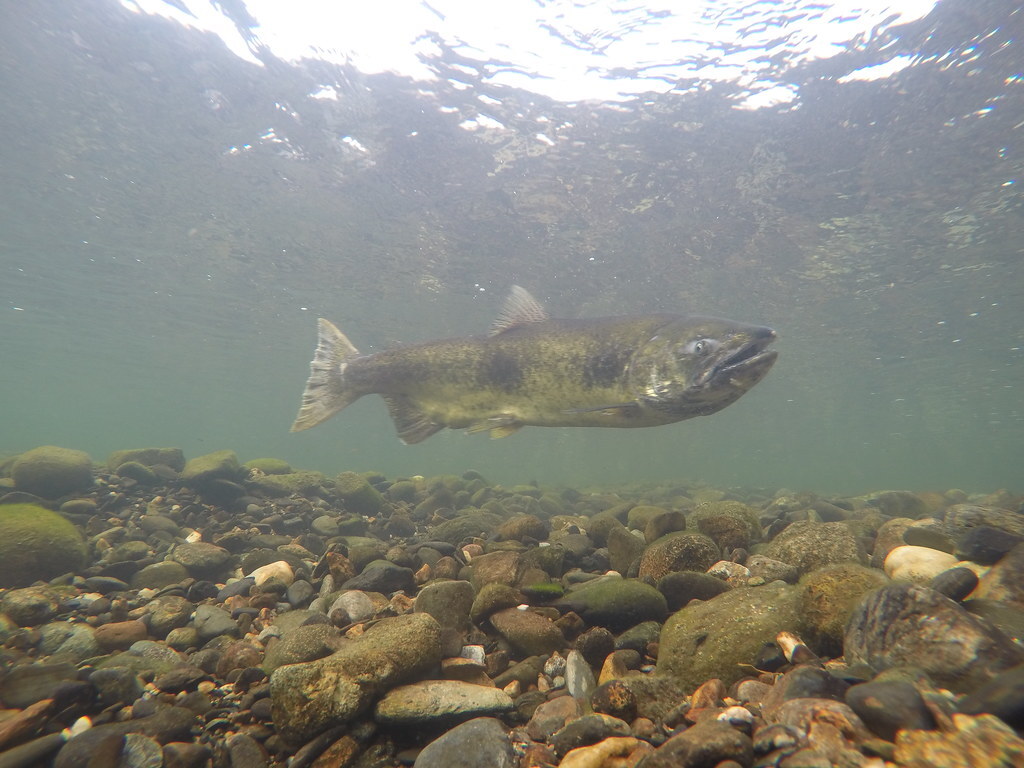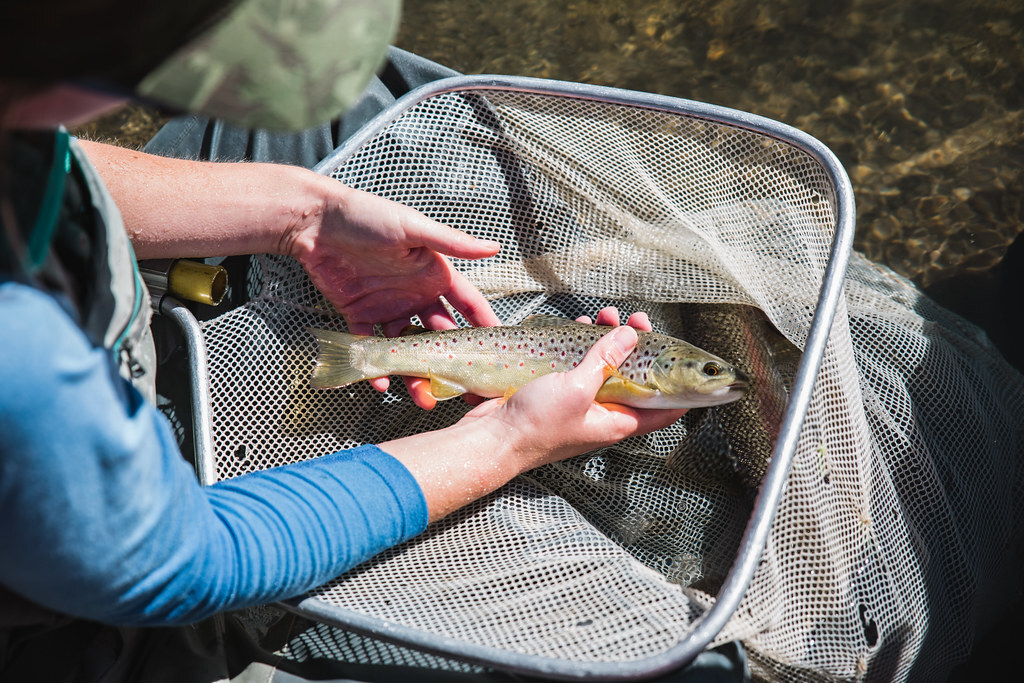Nor Cal Fish Report
Stanislaus River Fish Report for 1-4-2021
Stanislaus River Fish Report for 1-4-2021
Hot and Crowded: Where and When Salmon Spawn on the Stanislaus River
Stanislaus River - CA

Photo Credit: Courtesy of FishBio
by FISHBIO
1-4-2021
Salmon that lay their eggs in the Stanislaus River have evolved to take advantage of a narrow time window when spawning is most likely to be successful. Spawn too early, and river temperatures may be too warm for sensitive, incubating eggs; spawn too late and temperatures may be too warm for outmigrating juveniles. But what happens when thousands of years of evolution run into a prolonged and historic drought at the southern extent of the Chinook salmon spawning range? This question was explored in-depth by FISHBIO in an article published in the journal Fisheries Management and Ecology (Peterson et al. 2020), which describes where and when salmon spawned in the Stanislaus over a seven year period and is summarized in a new video. The study found that at the height of drought conditions in 2014 and 2015, salmon spawned in water that was warmer than critical thresholds, which likely hampered egg survival. Salmon also tended to build their redds, or nests, in a few key areas year after year, often on top of other redds, even if other habitat is available. These findings can help inform water management and river restoration efforts to benefit salmon.
The study investigated Chinook salmon spawning behaviors in the Stanislaus River using data collected from spawning surveys conducted from 2009–2015, a time period that encompassed a variety of flow conditions, including a record-breaking drought, as well as highly variable fall-run Chinook salmon escapement. Throughout the study period, the total number of redds ranged from 488 in 2009 to 2,358 in 2015, despite 2015 being the warmest year studied. Spawning occurred slightly later during drought years (6–10 days later compared to wet years) primarily because of a delay in migration as opposed to salmon waiting on the spawning grounds. In 2014 and 2015, nearly all spawning occurred in water temperatures above the threshold of 55.4ºF recommended by the Environmental Protection Agency for spawning – and half the spawning in those years occurred at temperatures of 58–61ºF. This reflects that female Chinook salmon have a fixed amount of energy and cannot simply wait for the water to cool down; they are quickly forced to spawn despite poor conditions for their offspring.
Superimposition, or salmon building redds on top of each other, was observed every year throughout most of the spawning reach, but was more frequent when larger numbers of fish were present (in 2012 and 2015) and at spawning areas closer to the upstream migration barrier at Goodwin Dam. Superimposition appeared to occur in the same riffles throughout the study period, even at relatively low redd densities, suggesting that superimposition may be driven by salmon habitat preference rather than an absence of suitable spawning locations. During the years of highest salmon abundance (2012 and 2015), more than half of the redds in the prime spawning habitat experienced superimposition. The estimated probability of superimposition was 16% across the entire spawning reach for 2012–2015.
It appears that suboptimal spawning conditions during the drought and the inability to adjust spawning behaviors may have contributed to record low juvenile abundance (or recruitment) in the spring of 2015 and 2016. In those years, the estimated number of recruits (i.e., fry, parr, and smolts) per female spawner observed from FISHBIO’s monitoring program were 109 and 84, respectively, well below the long-term average of 551 (range 84 – 1,155). Overall, the lack of flexibility that Chinook salmon demonstrated to adjust their spawning activity to avoid warm water temperatures may be due in part to large numbers of hatchery-origin strays in the Stanislaus River. Although no hatchery program exists on the Stanislaus, an estimated 66–83% of adult Chinook spawners from 2011 to 2013 were of hatchery origin (Palmer-Zwahlen and Kormos 2013, 2015). Local adaptation is much less likely to occur for a population that receives an annual influx of hatchery-origin fish. Key management recommendations from this study include reducing the impacts of hatchery fish on the Stanislaus, maintaining a cold-water pool in upstream reservoirs in order to release cold water during salmon spawning, and designing habitat restoration projects to mimic the characteristics of spawning “hotspots” where superimposition was frequently observed. The observed lack of spawning flexibility suggests that Chinook salmon are not well poised to cope with climate change. However, careful management could help the species persist in spite of environmental changes.
FISHBIO is a dedicated group of research scientists, engineers, and technicians that specialize in counting, tracking, and analyzing trends in fish and wildlife populations throughout the world. An expert staff, technical capacity, and state-of-the-art equipment make FISHBIO a trailblazer in aquatic research. For more information, please visit FISHBIO.com
< Previous Report Next Report >
< Previous Report Next Report >
More Reports

12-7-2020
The full diversity of life doesn’t fit neatly into categories, but that hasn’t dissuaded humans from trying to split animals...... Read More

11-16-2020
Humans and other endothermic, or “warm-blooded” animals have the luxury of a built-in temperature control system. For ectothermic animals like...... Read More

www.NorCalFishReports.com © 2025. All Rights Reserved.
Website Hosting and Design provided by TECK.net
Website Hosting and Design provided by TECK.net